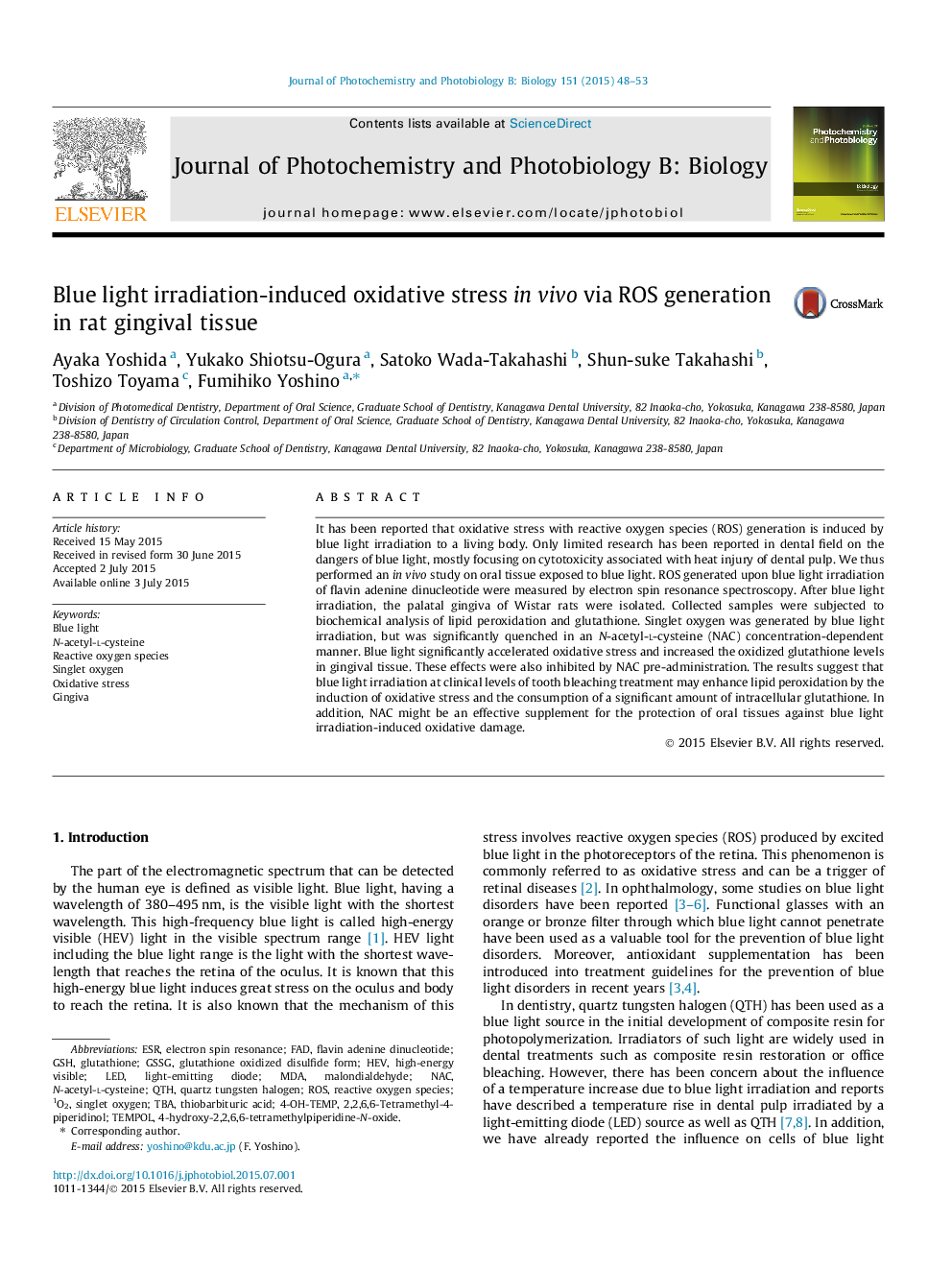| Article ID | Journal | Published Year | Pages | File Type |
|---|---|---|---|---|
| 30215 | Journal of Photochemistry and Photobiology B: Biology | 2015 | 6 Pages |
•Singlet oxygen was generated via flavin adenine dinucleotide with blue light irradiation.•Blue light significantly accelerated oxidative stress and increased the oxidized glutathione levels in gingival tissue.•Disorders associated with oxidative stress may be prevented by N-acetyl-l-cysteine.
It has been reported that oxidative stress with reactive oxygen species (ROS) generation is induced by blue light irradiation to a living body. Only limited research has been reported in dental field on the dangers of blue light, mostly focusing on cytotoxicity associated with heat injury of dental pulp. We thus performed an in vivo study on oral tissue exposed to blue light. ROS generated upon blue light irradiation of flavin adenine dinucleotide were measured by electron spin resonance spectroscopy. After blue light irradiation, the palatal gingiva of Wistar rats were isolated. Collected samples were subjected to biochemical analysis of lipid peroxidation and glutathione. Singlet oxygen was generated by blue light irradiation, but was significantly quenched in an N-acetyl-l-cysteine (NAC) concentration-dependent manner. Blue light significantly accelerated oxidative stress and increased the oxidized glutathione levels in gingival tissue. These effects were also inhibited by NAC pre-administration. The results suggest that blue light irradiation at clinical levels of tooth bleaching treatment may enhance lipid peroxidation by the induction of oxidative stress and the consumption of a significant amount of intracellular glutathione. In addition, NAC might be an effective supplement for the protection of oral tissues against blue light irradiation-induced oxidative damage.
